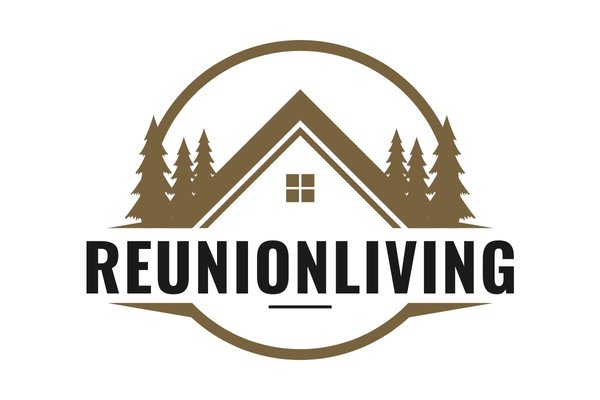Sustainable home design is no longer just a trend. With the increasing concern for the environment, homeowners are becoming more conscious of the impact their homes have on the planet. Eco-friendly interior design has become a popular topic, and interior design bloggers are at the forefront of this movement, sharing sustainable ideas and products that are both stylish and environmentally friendly.
Here are some eco-friendly ideas from interior design bloggers that you can incorporate into your home design
Upcycling and repurposing
Upcycling and repurposing are creative ways to reuse old items and give them new life. Instead of throwing away old furniture, consider repurposing them into something new. For instance, an old door can be turned into a headboard, or a dresser can be transformed into a kitchen island. Upcycling not only saves money, but it also reduces waste and promotes sustainability.
Energy-efficient lighting
Lighting plays a significant role in interior design, and energy-efficient lighting options can make a big difference in reducing your energy consumption. LED bulbs, for example, use 75% less energy than traditional incandescent bulbs, and they last up to 25 times longer. You can also install dimmer switches to control the amount of light and reduce energy consumption.
Natural and eco-friendly materials
Interior design bloggers are promoting the use of natural and eco-friendly materials, such as bamboo, cork, and recycled glass. These materials are not only sustainable but also add a unique and stylish touch to any space. Cork flooring, for instance, is durable, comfortable, and easy to maintain. Bamboo furniture is strong, lightweight, and comes in various styles and designs.
Sustainable textiles
Choosing sustainable textiles for your home, such as organic cotton, hemp, and linen, can make a significant impact on the environment. These fabrics are made from natural fibers and are grown without harmful chemicals or pesticides. They are also biodegradable and have a smaller carbon footprint than synthetic fabrics. Organic cotton, for example, is grown using sustainable farming methods that conserve water and reduce soil erosion.
Indoor plants
Indoor plants not only add beauty and life to your home, but they also help purify the air and improve the indoor environment. Plants such as spider plants, peace lilies, and snake plants are easy to care for and can remove toxins from the air. They also absorb carbon dioxide and release oxygen, helping to reduce indoor air pollution.
Water conservation
Water conservation is an important part of sustainable home design. Interior design bloggers are promoting the use of water-efficient fixtures and appliances, such as low-flow toilets, showerheads, and faucets. You can also install rainwater harvesting systems to collect rainwater and use it for irrigation or flushing toilets.
Recycling and composting
Recycling and composting are simple yet effective ways to reduce waste and promote sustainability. Interior design bloggers are incorporating recycling and composting stations into their home designs, making it easier for homeowners to recycle and compost their waste. You can also use compost bins to turn food scraps and yard waste into nutrient-rich soil for your garden.
Energy-efficient appliances
Energy-efficient appliances are not only eco-friendly but also cost-effective in the long run. Look for appliances with the Energy Star label, which indicates that they meet energy efficiency guidelines set by the Environmental Protection Agency. Energy-efficient appliances, such as refrigerators, washing machines, and dishwashers, use less energy and water than traditional models, reducing your carbon footprint and energy bills.
Non-toxic paints and finishes
Conventional paints and finishes can release harmful chemicals into the air, causing indoor air pollution. Interior design bloggers are promoting the use of non-toxic paints and finishes, such as low-VOC and zero-VOC paints, which have fewer harmful chemicals and pollutants. These paints and finishes are made from natural ingredients and have little to no odor, making them a healthier and safer option for your home.
Green cleaning products
Cleaning products can also contribute to indoor air pollution, as many contain harmful chemicals that can affect your health and the environment. Interior design bloggers recommend using green cleaning products that are made from natural and biodegradable ingredients, such as vinegar, baking soda, and essential oils. These products are not only eco-friendly but also cost-effective and easy to make at home.
Solar power
Solar power is a renewable and sustainable energy source that can be used to power your home. Interior design bloggers are promoting the use of solar panels to generate clean and renewable energy, reducing your dependence on fossil fuels and electricity from the grid. Solar panels can be installed on your roof or in your yard, and they can provide enough energy to power your home, reduce your energy bills, and even earn you money through net metering.
Smart home technology
Smart home technology can also help you reduce your energy consumption and promote sustainability. Interior design bloggers are promoting the use of smart home devices, such as smart thermostats and lighting systems, which can be controlled remotely and programmed to reduce energy consumption when you are not at home. Smart appliances, such as refrigerators and ovens, can also be programmed to optimize energy usage and reduce waste.
Sustainable home design is more than just a trend; it is a lifestyle that promotes eco-friendliness, sustainability, and healthy living. Interior design bloggers are leading the way in promoting sustainable ideas and products that are both stylish and environmentally friendly.
